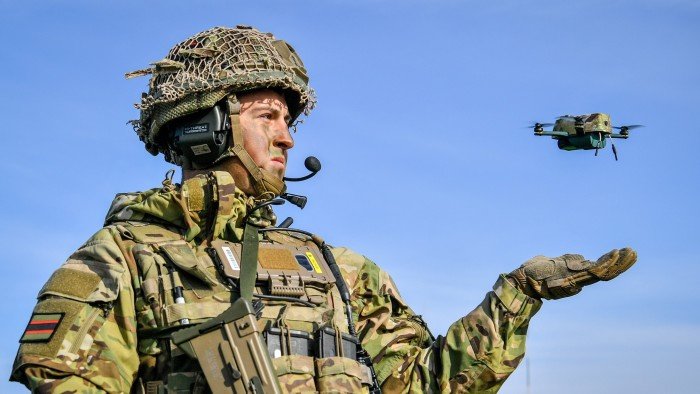Unlock the Editor’s Digest for free
Roula Khalaf, Editor of the FT, selects her favourite stories in this weekly newsletter.
The writer is the Labour MP for Plymouth Moor View and sits on the House of Commons defence committee
The UK seems unable to modernise its military. Even while spending billions arming Ukraine with the latest warfighting technology, our own soldiers are forced to train as they did in the early 2000s.
No first-person view (FPV) drones for them, now ubiquitous on the battlefield. Nor the uncrewed surface vessels (USVs) that changed maritime fighting forever when they vanquished Russia’s Black Sea fleet in 2023.
The Ministry Of Defence celebrates trials in these capabilities, but I am told by former colleagues who still serve that we remain far from arming our forces with them.
When the UK lags behind, the finger is often pointed at procurement inefficiencies, overstretched budgets, or the lack of financing options for start-ups and small businesses. These are real issues but they’re not the main problem. The more I look at it, the more convinced I am that the deeper challenge in the MoD is adoption.
This refers to the magical moment that a new military capability becomes a recognised requirement and lands on a long-term budget line. Until that happens, the military will not train with it, nor update its tactics and doctrine to include it. It won’t even be permitted in UK training areas.
Adoption also means that whoever made this new technology gets paid. And by extension, it is the moment that private capital starts to pay attention, seeing a company secure a direct contract with government. It is the green light to invest in other companies, because they know there is now a real customer.
The MoD has spent £35mn on FPV drones since July 2024. So, evidently, we know FPV drones are required in war. But all of these drones went to Ukraine, none went to our own forces.
With discussion of “credible deterrence”, coalitions of the willing and peacekeeping boots on the ground, it is hard to fathom why this remains the case.
Change doesn’t just require money. It requires will. And right now there is a deep cultural and structural resistance to change inside the MoD. This inertia stops new technologies from being adopted.
There are myriad technical restrictions in place, ranging from air authority hand-wringing about training with drones to civil service commercial competition rules. As one CEO put it to the defence committee: “The MoD understands what equipment they want to fight the war. They are restricted from buying that equipment. Actively restricted from solutioneering.”
This should be ringing alarm bells.
But underpinning it all is a deeply risk-averse culture in the MoD. The stakes are high in defence, and nobody wants to be blamed for an error. But new technologies need room to fail, then adapt and improve as a result.
The US Defense Innovation Unit has successfully moved technology from Silicon Valley into long-term defence contracts, scaling up a new generation of defence behemoths like Anduril, Palantir and Shield AI.
The good news is that the UK is already purchasing and developing modern defence technologies. Beyond FPV drones and USVs, we have bought a host of advanced robotics, intelligence-gathering platforms, electronic warfare devices and loitering munitions.
Monday’s strategic defence review is poised to address many of the long-standing challenges in UK defence. Ministers have promised clear answers for how the UK will confront the new threats we face, alongside expected procurement reforms and a renewed focus on readiness.
Equally, the government’s new defence and security partnership with the EU sends many promising signals — including on the potential for a global defence bank, which would see countries pooling resources and facilitating defence funding.
This is all very welcome. But unless the MoD fixes its broken adoption culture, no amount of defence financing will take Britain’s military into the future.
If we are serious about modernising UK forces, we need an MoD that adopts new technologies. We must be willing to pay for new tech, and rapidly improve it if it fails. Gone are the days where we sit back and wait for industry to deliver.
All service personnel know we must modernise. The Royal Marines, the organisation I grew up in, recently announced it wanted to train all recruits to fly FPV drones. It falls to the ministry, civil servants and ministers to unlock the door they are pushing against.
The defence establishment must give our world-class forces world-class tech to train with. Future financing and innovation will follow. But it starts with a culture that says yes to change.
